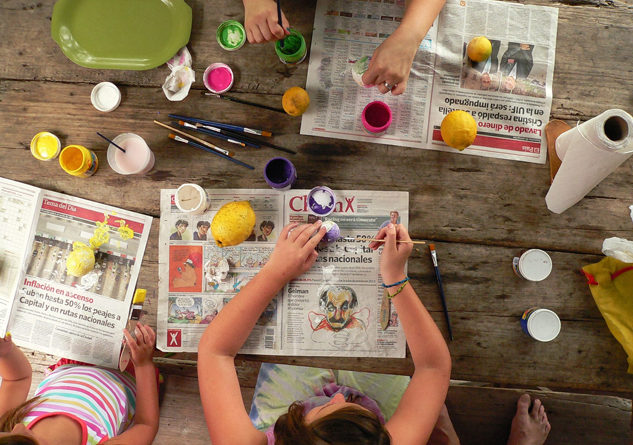David Murphey
Child Trends
Young children love to draw, paint, sing, and dance, and these activities play an important role in their early development. The benefits of arts participation persist into adolescence and beyond. Here are five reasons why the arts are important for children.
Arts participation is associated with numerous positive academic and personal outcomes.
These include higher grades and test scores, enrollment in post-secondary education, attainment of a bachelor’s degree, and higher levels of literacy and civic engagement. Secondary-school students who participate in the arts are more likely to achieve a degree, and tend to continue their artistic habits into adulthood.
Arts participation also promotes children’s social-emotional development by fostering positive social skills, regulation of emotions, openness to innovation, and connections with new people and ideas. Art instruction can encourage school participation and attendance and lead to greater student self-esteem and motivation. These positive changes can improve overall classroom climate as well.
The benefits of arts participation may be greatest for children who are economically disadvantaged.
The favorable outcomes associated with high levels of arts participation are particularly strong for students from families with lower socioeconomic status. For example, arts participation lowers cortisol levels (a biological marker of stress) for low-income preschoolers. Young people from poor communities also tend to benefit from having one or more projects that strengthen their sense of self and connect them with peers who share their interests. These “identity projects” can include starting a business or organization, building a skateboard ramp-or participation in the arts.
Arts organizations can positively influence children’s neighborhoods.
There is some evidence, for example, that the presence of arts organizations (including performance facilities, galleries, and artists’ workspaces) helps reduce a neighborhood’s concentrated poverty and attract other creative and high-tech enterprises. Research in New York City has shown that neighborhoods with more arts activity have lower felony rates and more effective local schools. The presence of youth-serving organizations in a community is also associated with lower levels of crime and neighborhood violence.
Children’s arts participation varies by age, gender, and educational status.
In general, children participate in fewer arts activities as they grow older. For instance, 48 percent of 8th graders report being involved in school music or other performing arts, but only 37 percent of 12th graders do. Girls are much more likely than boys to engage in these activities in 8th, 10th, and 12th grades. Students are more likely to participate in school arts activities if their parents have attained higher degrees, and if they plan to attend a 4-year college themselves.
Music, in particular, may give children a brain boost.
Young people who have had music training demonstrate higher cognitive skills across disciplines. There are indications, not yet conclusive, that children who engage with music at an early age develop neural connections that non-musical children don’t develop. Specifically, musically engaged children have heightened perception of tonal changes and improved “auditory processing”-the ability to understand speech, which is important for school success.
For more information, see “Participation in School Music or Other Performing Arts,” one of more than 120 indicators of children’s well-being featured in the Child Trends DataBank.






